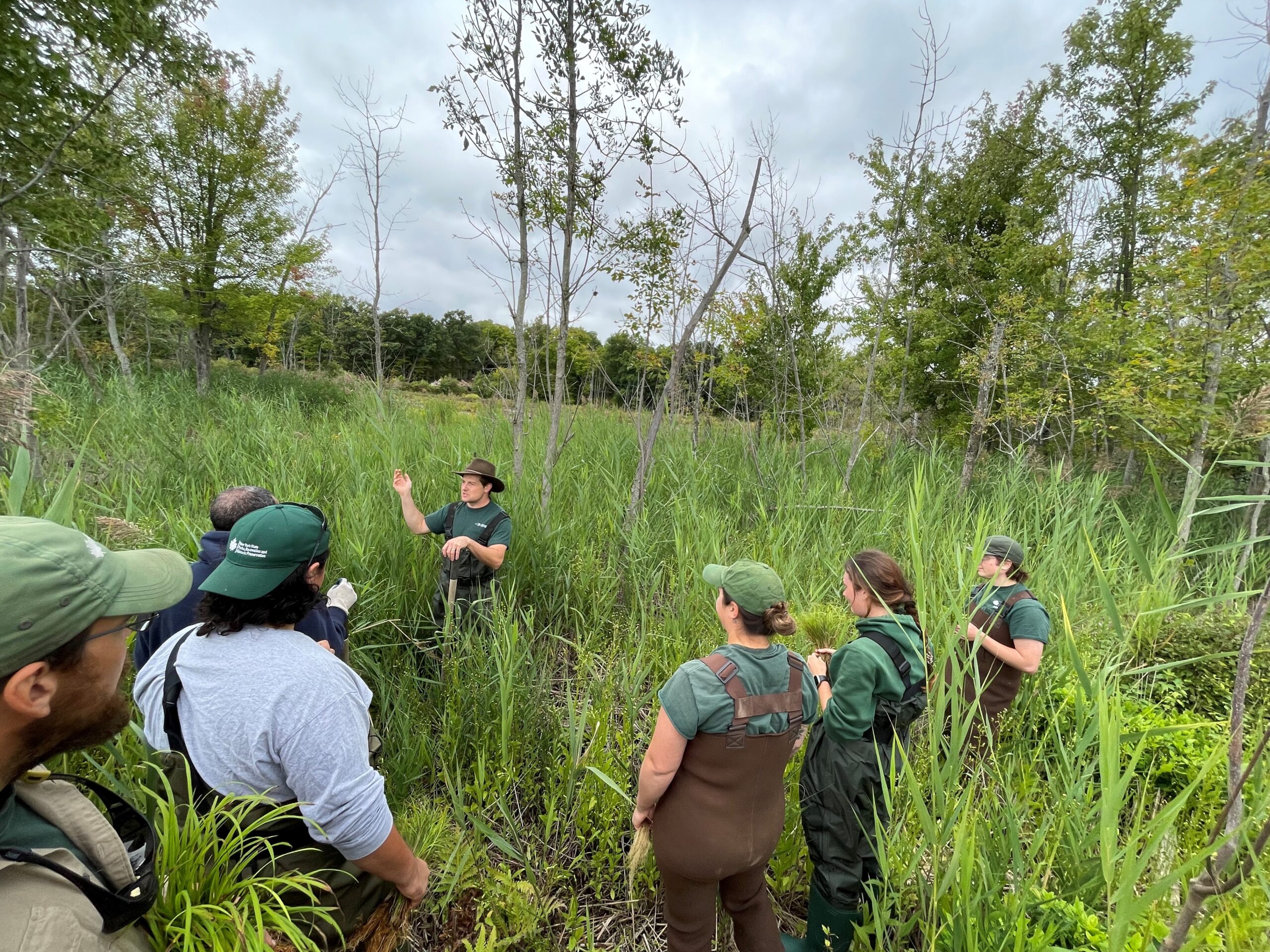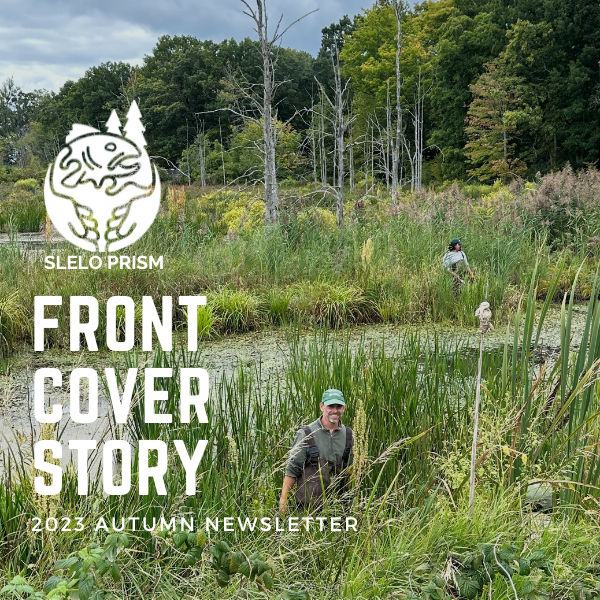This article was featured in the 2023 Autumn Newsletter by, Maria Cipullo– 1000 Islands Regional Trails Coordinator, SCA Supervisor.
.
Late summer 2023 brought a long-awaited and highly anticipated chapter to Wellesley Island State Park. On September 14th and 15th employees of NYS Parks’ Plant Materials Program, Thousand Islands Region, and Statewide Environmental Division were joined by Student Conservation Association members as part of the latest chapter in Phragmites control and ecosystem restoration at the entrance and eastern side of the State Park. Over 3,500 individual plants were given new permanent homes among the resident cattails, sedges, button bush, and more.
Wellesley Island’s shallow emergent marshes, red maple hardwood swamps, and shrub swamps are well-known Blanding’s turtle habitat – a NYS threatened, IUCN endangered species. This species and countless other amphibians, fish, and insects rely on the open water channels that connect between aquatic plants for nesting, feeding, shelter, and rest. When Phragmites takes over, its’ dense carpet of root mats creates a barrier impossible to pass through. So, NYS Parks created a plan of attack – control the invasive and restore with native plant species.

Beginning in 2019, the Thousand Islands NYS Parks Region has physically cut the Phragmites stalks in winter, using the ice to our advantage. This cutting revealed the active stalks over the growing season, which were then targeted and treated with an herbicide every fall to stunt the growth and cause dieback year after year. This method ensured that as little herbicide as possible was utilized. During year one, these stalks were an average of 9 feet tall and as of this year, the average height is 4ft.
Simultaneously since 2019, the NYS Parks’ Plant Materials Program has harvested a variety of native seeds from throughout the State Park and grown them in their nursery located in Sonnenburg Gardens. Collecting seeds locally ensures that their genetic makeup can survive in the north country’s seasonality, specifically our harsh winters.
After 4 years of combined efforts, the patches have shrunk by roughly 40%, became less dense, and are physically stunted. This progress was needed to plant the nursery stock on site. Plantings were focused on 1.9 acres of successfully controlled previous-Phragmites sites. The 3500+ planting list included: tall flat-topped white aster, rough-leaved goldenrod, American bur-reed, New England aster, common fringed sedge, crested sedge, sallow sedge, fowl manna grass, sensitive fern, buttonbush, silky dogwood, common winterberry, and narrow-leaved meadowsweet. There was a palpable optimism in the air, and the work was light with so many helpful hands! Below are some photos captured during the plantings, provided by NYS OPRHP.





Please fill out the form below to be added to our listserv and receive our seasonal newsletter, event invitations and other announcements.


